Updated 2024-10-13
Lars Thunberg – SM0TGU
I am available for SKED if anyone would like locator JO89WK. Please contact me via e-mail lars(at)larsthunberg.se or via AMSAT-SM Twitter @amsat_sm
I have been a radio amateur since 1989, first callsign SM5TGU and current call is SM0TGU. VHF-communication and satellites has been my first choice and I have been active on the RS-sats, AO-10, AO-13, FO-sats etc. I have been active in AMSAT-SM for many years.
After 15 year of radio silence I started a new setup in 2013 at my new QTH in Sollentuna (north of Stockholm). Now my focus is receiving telemetry from VHF and UHF amateur satellites and Cubesats but I can also make SSB or FT4 contacts via satellite if anyone are interested in working locator JO89WK.
From the summer 2018 I am also QRV on HF – digital modes. You can follow me as AMSAT-SM from our Twitter profile.
—
Jag har varit licensierad radioamatör sedan 1989-talet, först med signalen SM5TGU och efter flytt till Stockholm med nuvarande signal SM0TGU. 1993 gjorde jag lumpen på S1 Enköping som en av de sista telegrafisterna inom armén och fick därmed även licens för kortvågsbanden. Jag körde i början av 1990 mycket satellit bla. från de ryska RS-satelliterna, AO-10 och AO-13. De roligaste stunderna hade jag via DX-satelliten AO-13 där jag med enkel utrustning körde stora delar av världen. Jag har även byggt egna digitala modem (tex. packet och RTTY) och antenner av olika slag.
Sedan min flytt till Stockholm i slutet av 90-talet hade jag en längre period där jag var QRT men under 2013 har jag åter igen börjat lyssna på satelliter och mitt främsta intresse är nu telemetrimottagning. Jag har alltid varit med runt styrelsen i AMSAT-SM och följer kontinuerligt utvecklingen inom vår hobby. Jag kan med nuvarande utrustning lyssna på samtliga forsknings- och amatörradiosatelliter som sänder på radioamatörbanden på VHF och UHF.
Från sommaren 2018 är jag även QRV på HF och då främst digitala mode FT8.
Jag är aktiv inom föreningen AMSAT-SM som är en intresseförening inom amatörradiosatelliter. Alla mina blogginlägg skriver jag på föreningens hemsida och Twitter.
Current radio setup
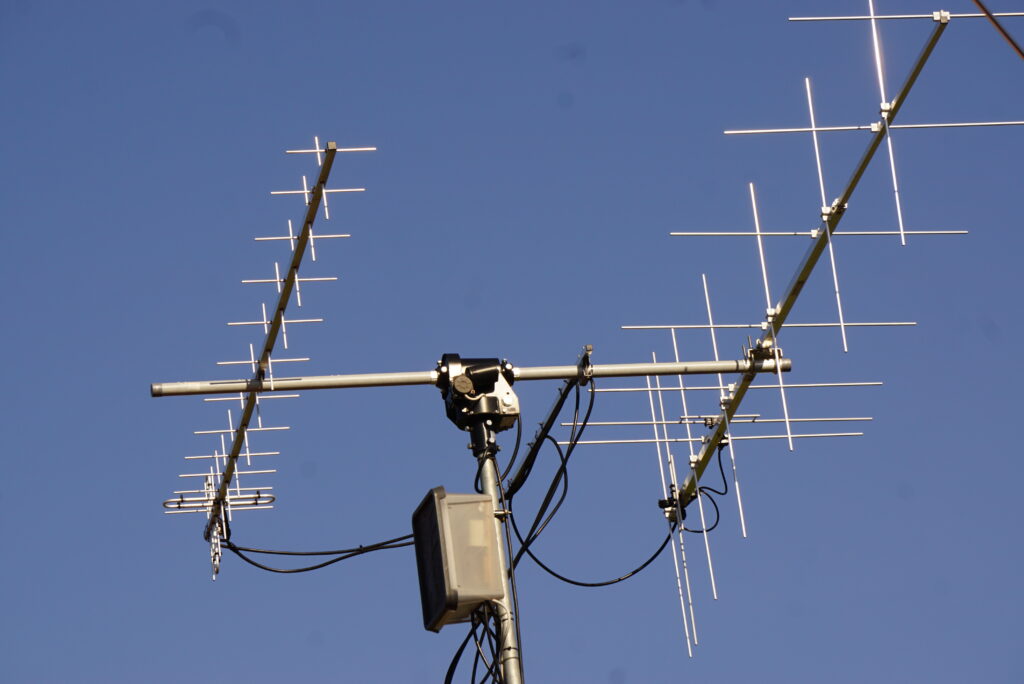
VHF/UHF yagi setup
This is my primary setup for receiving and transmitting via satellites:
- 4 meter 50mm steel pole/mast.
- Rotor RAS from SPID Elektronik – computer controlled via USB.
- 40 mm * 2 meter GFK Glas Fiber tube from Funk Elektronik.
- 2 * 7 el X-Yagi PA144-CROSS-14-3.5AP from Antenna-Amplifiers. Fixed Right Hand circulation.
- Special order 26 el UHF LFA X-Yagi (2* 13 el) from InnovAntennas.
- CX-600N coax relay placed after the UHF LNA and before the yagi, switching between vertical and horizontal.
- 2x16m RFC 400 low loss coax with N connectors (one for VHF, one for UHF). I have measured the loss after the LNA at the antenna to the SDR unit in office and it is very small, approx 1 dB.
- LNA from SHF-Elektronik: Mini-2 and Mini-70.
- Icom IC-9700 with PTRX-9700 panadapter and Airspy Mini.

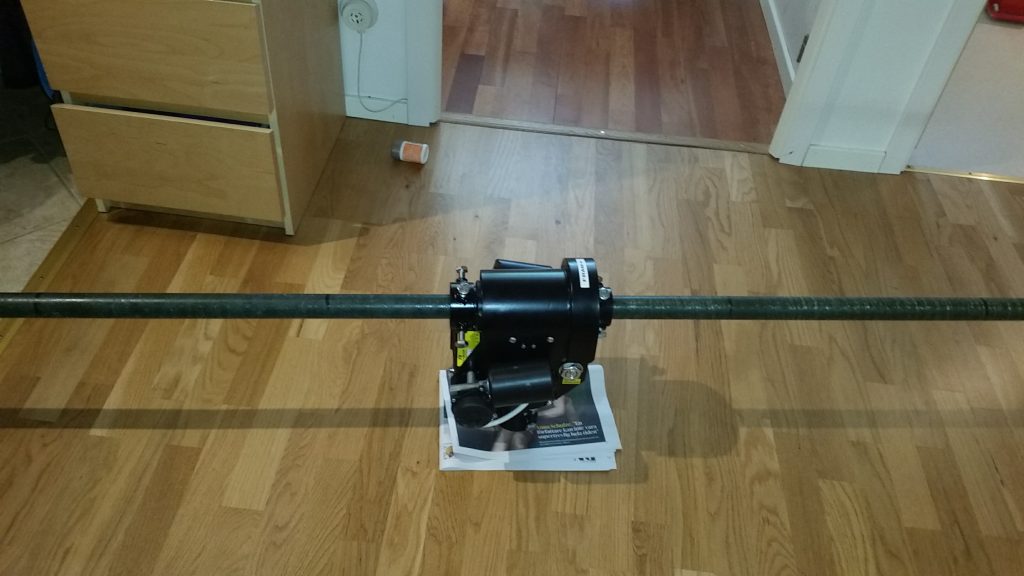
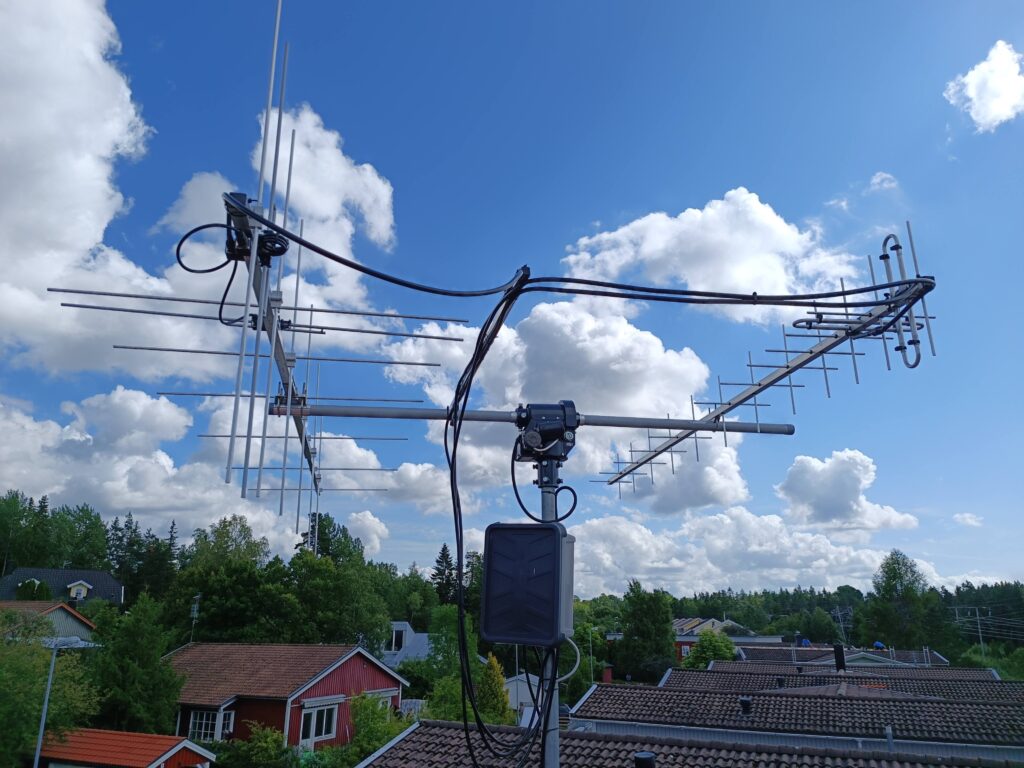
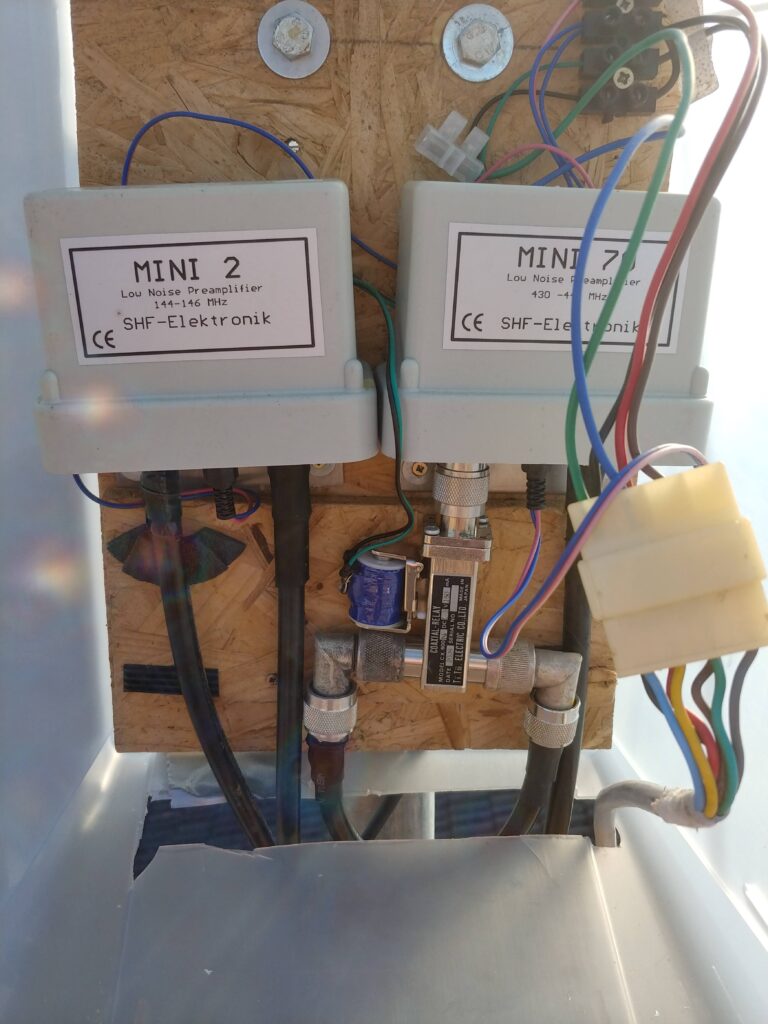
QO-100 setup
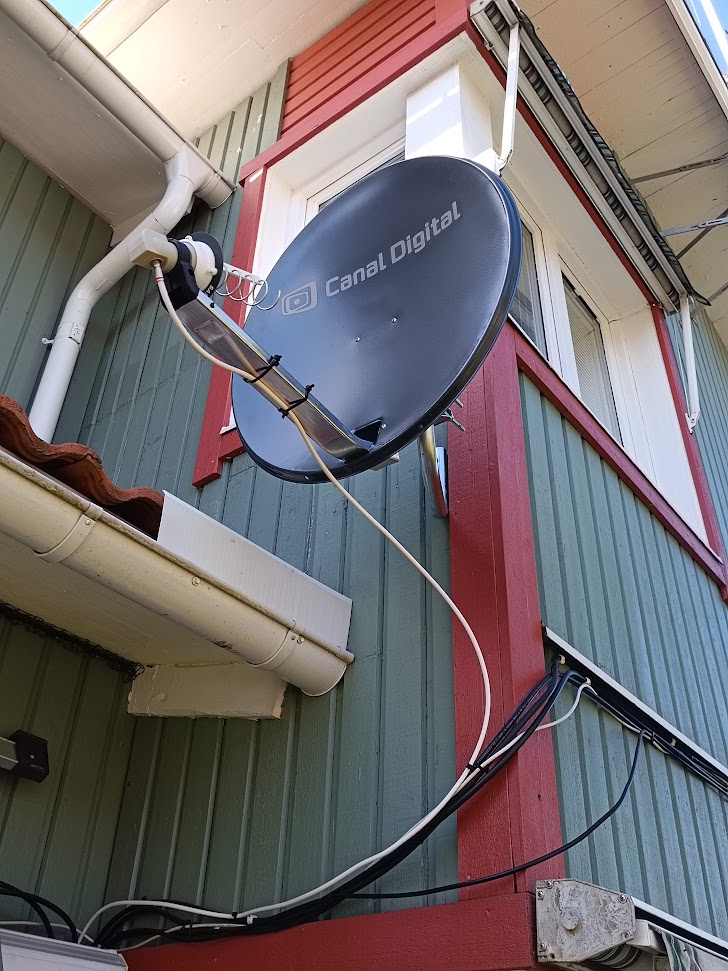
- SatRover Mk 1 from PE1CKK
- 2.4 GHz Helix (as a part of SatRover)
- LNB a part of the SatRover, feed with normal 75 ohms TV cable coax
- 60 cm dish from Triax (TD64) branded as Canal Digital
- IC-705 as TRX
- 10 dB attenuator and a number of meters of Hyperflex 5 coax cable to make the output on 2.4 GHz at the Helix to aprox 100 mW (legal power limit in Sweden)
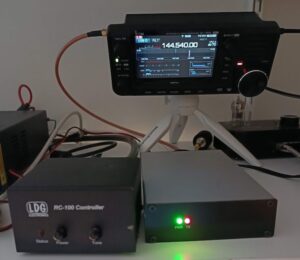
SatRover and the IC-705
L-band and S-band RX setup
One Helix is used for manual listening on the other one for the SatNOGS station (see below). See this post for construction notes.

I use the NooElec Ham It Down with the Helix antennas and LNAs. In the future it will probably be mounted on the rotor to be able to follow LEO satellites.

SatNOGS Station 858 – VHF/UHF
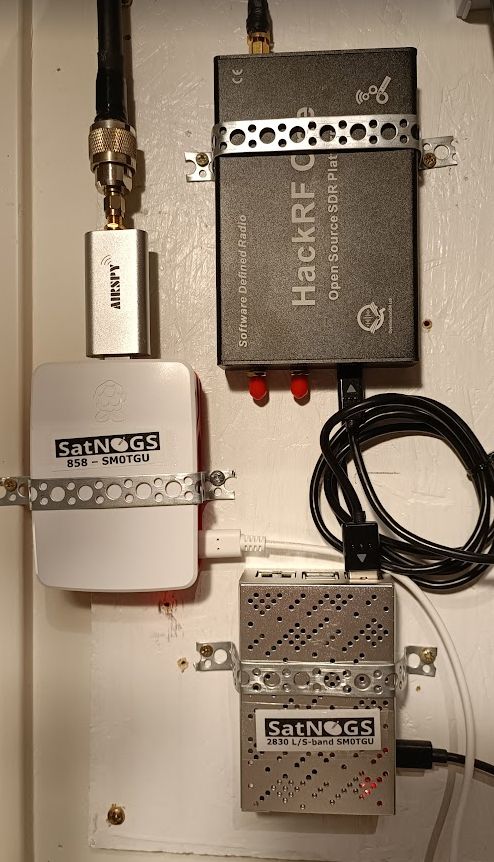
Start of my SatNOGS station was in july 2019 and is based on Rasberry PI 4 and an Airspy Mini. My station ID is: 858 – SM0TGU – VHF
More information about SatNOGS can be found here.
Antenna is a DIY 5 element UHF X-Yagi or single 5 element Yagi of DK7ZB model, optimized for 435 MHz but work well down to 145 MHz.
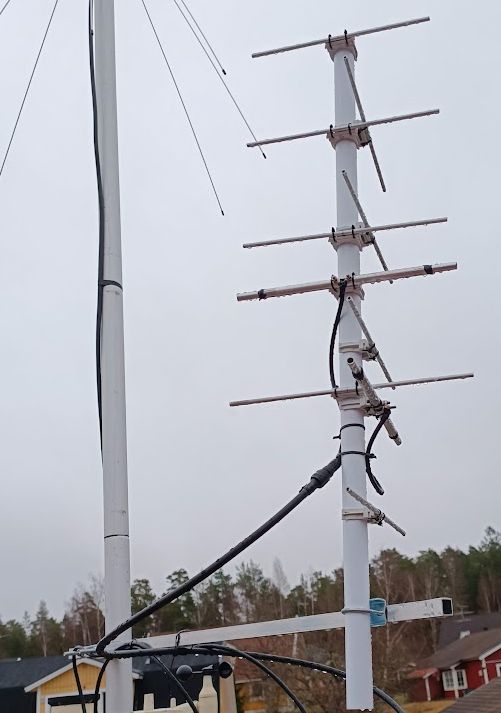
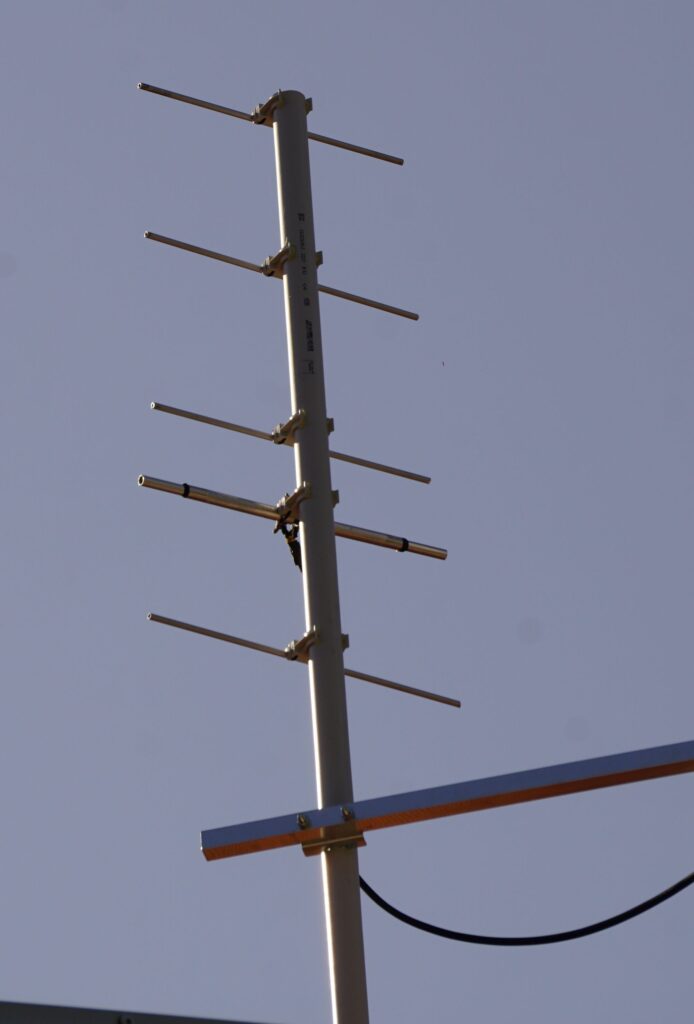
I have tried several antennas for SatNOGS. For VHF 145 MHz I have tried a Vinnant Turnstile Antenna (Crossed Dipole) from Vinnant Antennas. It is a very good omni antenna for satellite RX and is Right Hand Circular Polarized (RHCP) and gives a much less fading of the signal. It is also OK for various scanning in a wider freq spectrum.
For UHF 436 MHz I have tried several antennas (V-dipole, Eggbeater, Turnstile Crossed Dipole, fixed yagis…). This 3 el UHF antenna was very good during tests but was broken when I mounted it on the mast.
The current setup for SatNOGS station is:
- DIY 5 element UHF X-Yagi of DK7ZB model pointed to Zenit (90 degree elevation). Some notes here about this antenna.
- Aprox 13 m coaxial cable
- Airspy Mini
- Raspberry PI 4
- Addon satnogs_gr-satellites
- Auto-Scheduler
SatNOGS Station 2830 L and S-band

- 5 turn RHCP Helix antenna
- LNA model TQP3M9037 right under the Helix antenna power with Bias-T from the HackRF One (the white box in the picture)
- Aprox 13 m 75 ohm high quality coax cable
- HackRF One (picture – see above)
- Raspberry PI 4 (picture – see above)
- Addon satnogs_gr-satellites
- Auto-Scheduler
Broadband disconne antenna for RX
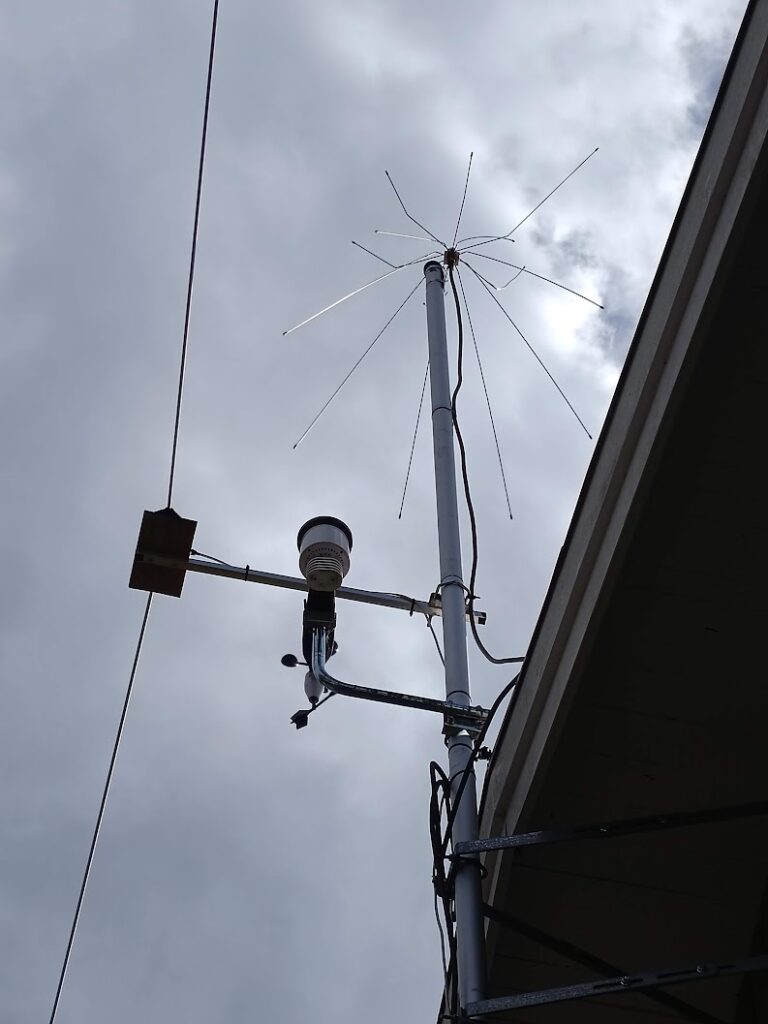
For casual RX and SatNOGS tests I have an disconne antenna model
08-ANT-0861. Currently dismantled due to S-band Helix instead.
HF and 50 MHz
With the Sky Loop antenna I can receive signal from all continents with FT8 and my signal has been heard on all continents with 200mW WSPR.
- 84m Sky Loop antenna tuned with LDG RT-100 remote tuner with approx 20 m Hyperflex 10 coax cable (new cable installed Oct 2022)
- Home made 50 MHz Oblong antenna
- Digital modes with WSJT-X software, FL-Digi, JT8CALL etc.
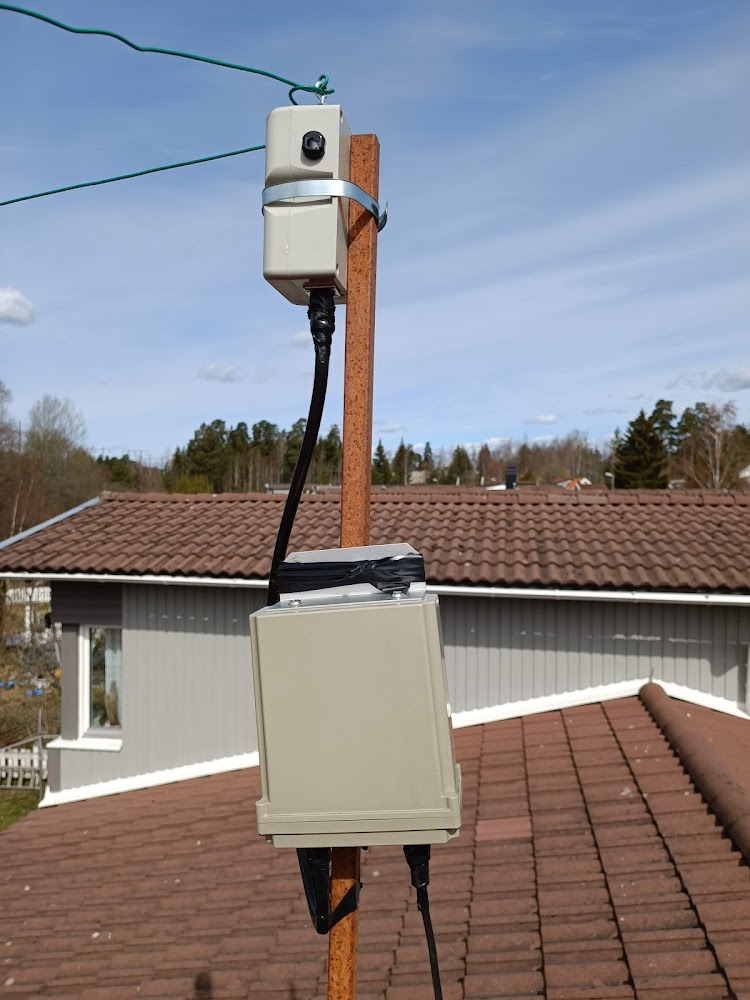
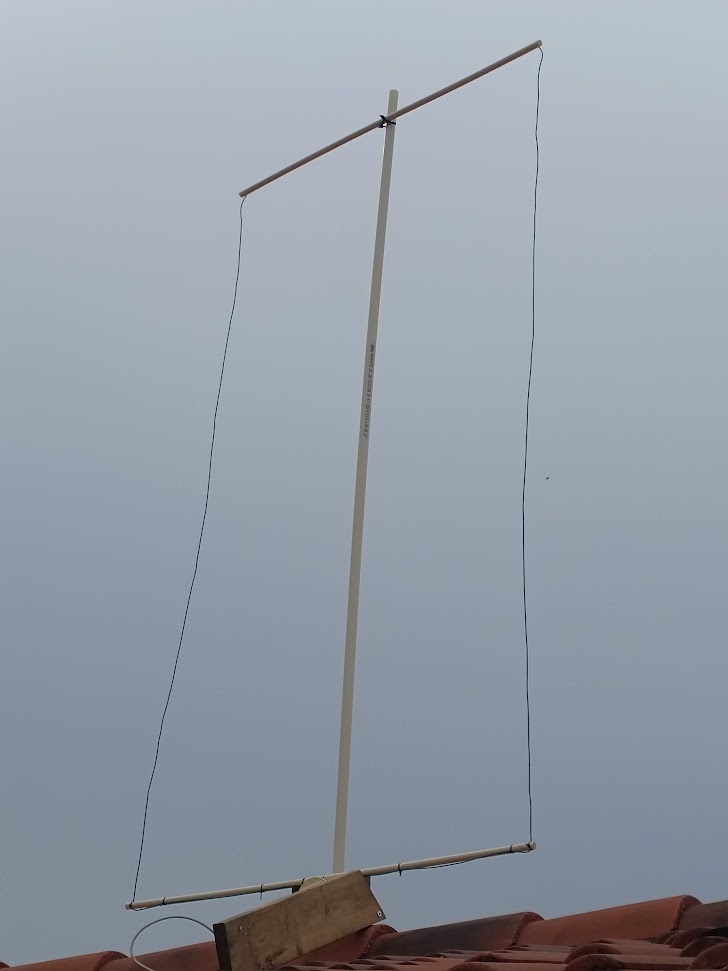
SDR-radio and decoding software
- Airspy Mini
- HackRF One (for SatNOGS S-band station)
- RTL-SDR v3 SDR Dongle (in a box right now, for backup…)
- Main software: SDR-Radio v3 with satellite tracking, frq doppler control and rotor control.
- PstRotator for controlling the RAS rotor, IC-9700 and linking with SDR Console.
- Several software for telemetry decoding, sound piping, tracking etc. (Soundmodem, DK3WN telemetry software etc).
HF/VHF/UHF Transceivers
- All bands: Icom IC-705 SDR Transceiver (max 10 watts)
- VHF/UHF: Icom IC-9700
- Koss SB45 PC headset with DIY MIC adapter for IC-9700
- ZachTek Desktop WSPR beacon
- VHF/UHF: Baofeng UV-5R handheld
Portable equipment
This is my portable setup for different configurations. Please feel free to comment – anything that should be changed or added? One very good link/article about a portable setup is this one from Ivo Klinkert, PA1IVO.
Transceiver
ICOM IC-705
For simplex FM satellites
Baofeng UV-5R
For use with IC-705 to make a full duplex station for FM satellites
ICOM IC-9700
For full duplex, but heavy
Batteries
- Turnigy LiPo 5Ah. Please see this post about my batteries.
- Eremit 12V 6Ah LiFePo4
Antenna VHF/UHF
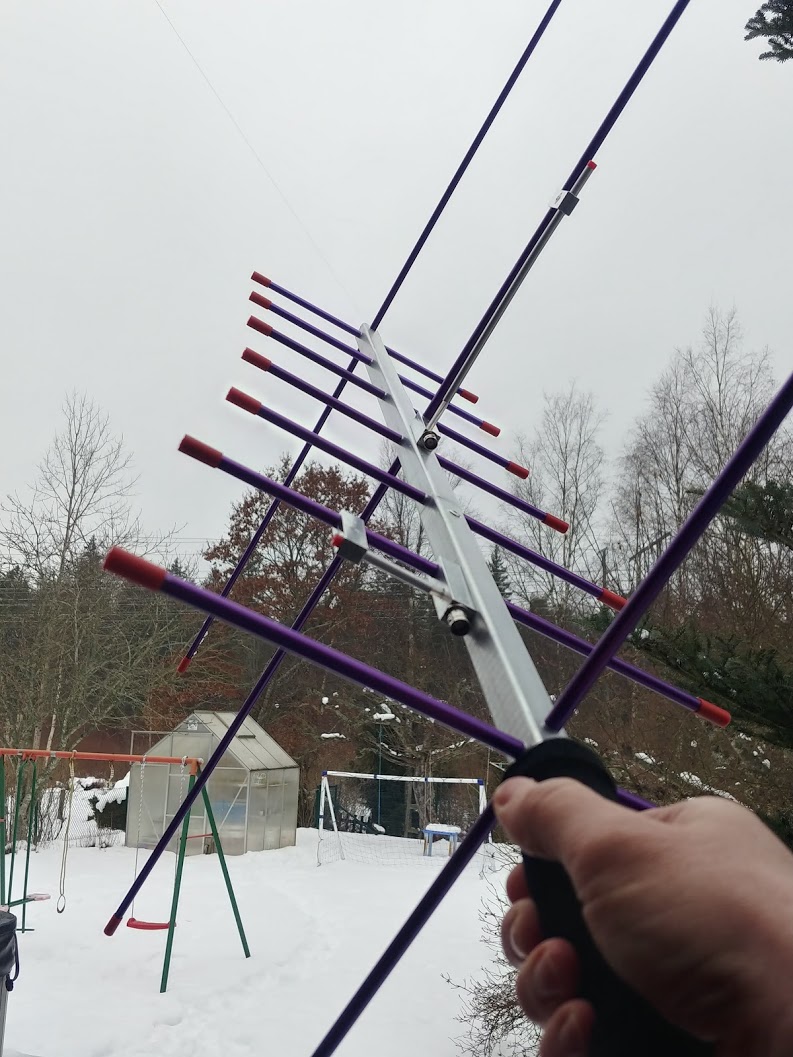
- Arrow antenna with VHF/UHF mini diplexer from https://janielectronics.com/ if using the IC-705.
Can also be used as a desense filter for 70 cm if needed and if working full duplex as described here at AMSAT-NA.

- HyperFlex 5 coax cables, BNC connectors
Antenna HF, cables and connectors
- OM0ET UltraLight Magnetic Loop antenna 40 – 10 meter band.
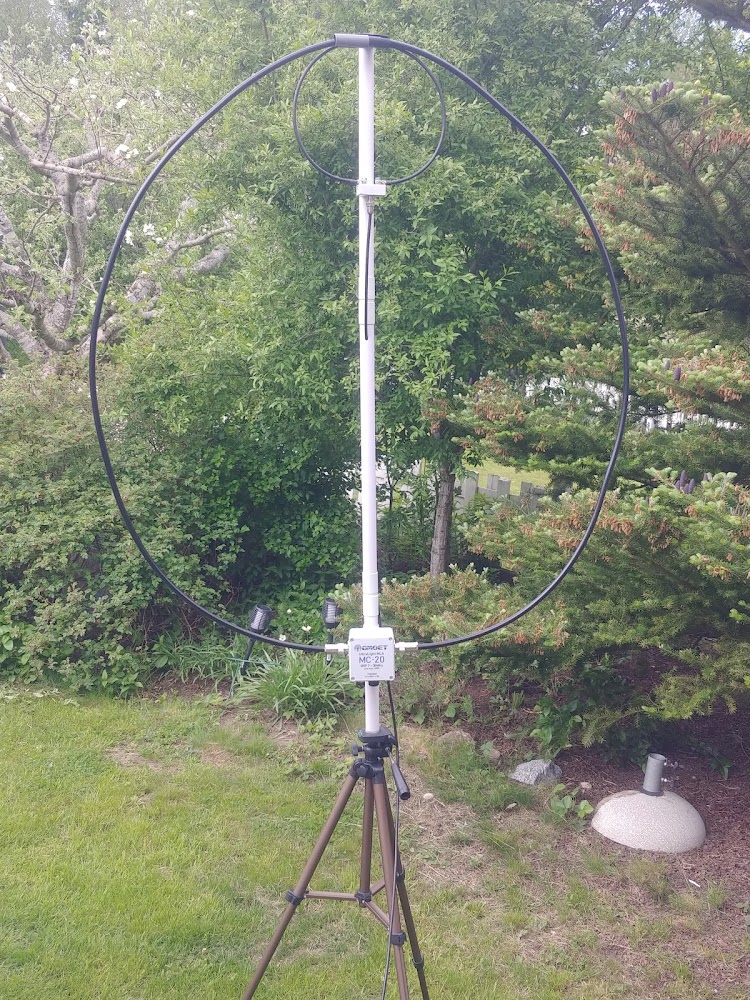
- BNC connectors as standard
- HyperFlex 5 coax cable (short, aprox 7 meter)
Portable Windows Computer
- My normal laptop
- SDR-Console V3 that also handles doppler tuning. See this post.
- Or doppler tuning via WLAN or USB with PstRotator
2 svar på ”Amateur radio satellites”
Tack snälla Lasse för Din information på Din hemsida. Har läst och måste jag erkänna blivit avundsjuk!
Tack Göran!